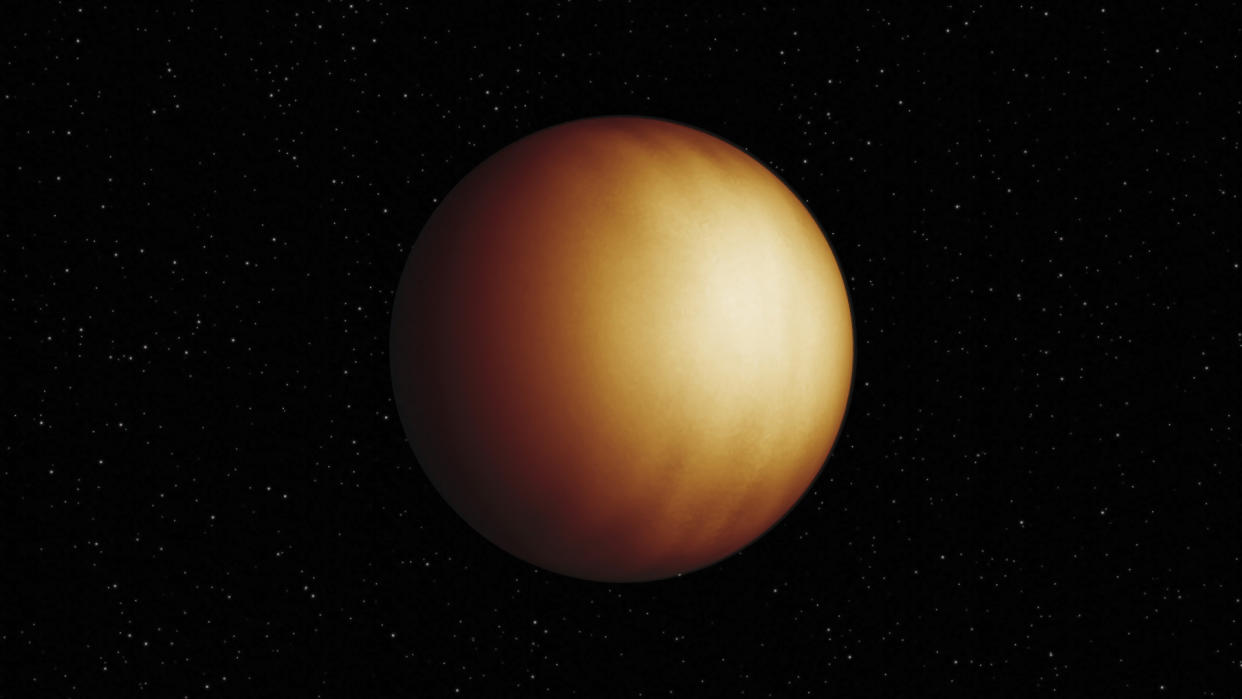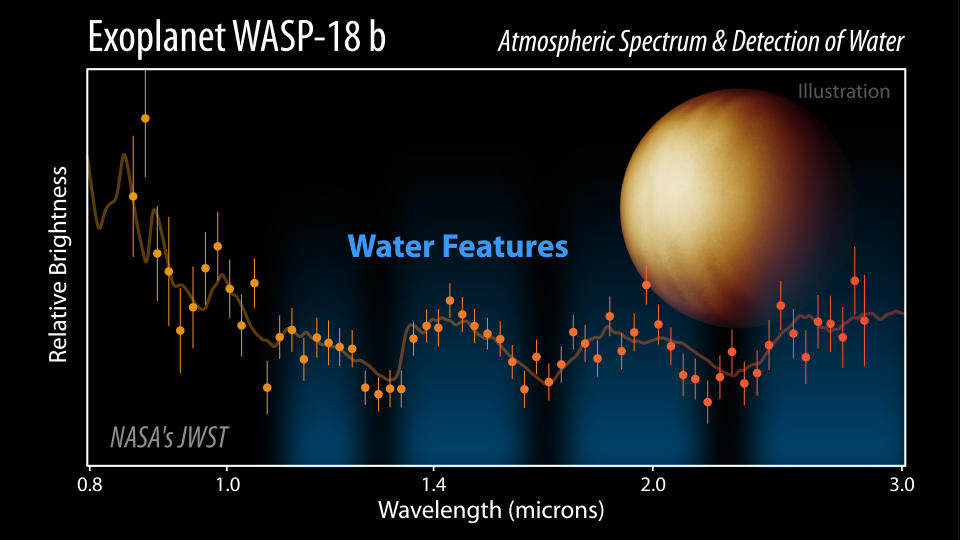James Webb Space Telescope finds water in super-hot exoplanet's atmosphere

The James Webb Space Telescope has found traces of water vapor in the atmosphere of a super-hot gas giant exoplanet that orbits its star in less than one Earth day.
The exoplanet in question, WASP-18 b, is a gas giant 10 times more massive than the solar system's largest planet, Jupiter. The planet is quite extreme, as it orbits the sun-like star WASP-18, which is located some 400 light-years away from Earth, at an average distance of just 1.9 million miles (3.1 million kilometers). For comparison, the solar system's innermost planet, Mercury, circles the sun at a distance of 39.4 million miles (63.4 million km).
Due to such close proximity to the parent star, the temperatures in WASP-18 b's atmosphere are so high that most water molecules break apart, NASA said in a statement. The fact that Webb managed to resolve signatures of the residual water is a testament to the telescope's observing powers.
"The spectrum of the planet’s atmosphere clearly shows multiple small but precisely measured water features, present despite the extreme temperatures of almost 5,000 degrees Fahrenheit (2,700 degrees Celsius)," NASA wrote in the statement. "It’s so hot that it would tear most water molecules apart, so still seeing its presence speaks to Webb’s extraordinary sensitivity to detect remaining water."
WASP-18 b, discovered in 2008, has been studied by other telescopes, including the Hubble Space Telescope, NASA's X-ray space telescope Chandra, the exoplanet hunter TESS and the now-retired infrared Spitzer Space Telescope. None of these space telescopes, however, was sensitive enough to see the signatures of water in the planet's atmosphere.
"Because the water features in this spectrum are so subtle, they were difficult to identify in previous observations," Anjali Piette, a postdoctoral fellow at the Carnegie Institution for Science and one of the authors of the new research, said in the statement. "That made it really exciting to finally see water features with these JWST observations."
In addition to being so massive, hot and close to its parent star, WASP-18 b is also tidally locked. That means one side of the planet constantly faces the star, just like the moon's near side always faces Earth. As a result of this tidal locking, considerable differences in temperature exist across the planet's surface. The Webb measurements, for the first time, enabled scientists to map these differences in detail.

The measurements found that the most intensely illuminated parts of the planet can be up to 2,000 degrees F (1,100 degrees C) hotter than those in the twilight zone. The scientists didn't expect such significant temperature differences and now think that there must be some not yet understood mechanism in action that prevents the distribution of heat around the planet's globe.
"The brightness map of WASP-18 b shows a lack of east-west winds that is best matched by models with atmospheric drag," co-author Ryan Challener, of the University of Michigan, said in the statement. "One possible explanation is that this planet has a strong magnetic field, which would be an exciting discovery!"
RELATED STORIES:
— James Webb Space Telescope notches 1st rocky planet confirmation
— James Webb Space Telescope reveals alien planet's atmosphere like never before
To create the temperature map, the researchers calculated the planet's infrared glow by measuring the difference in the glow of the parent star during the time the planet transited in front of the star's disk and then when it disappeared behind it.
"JWST is giving us the sensitivity to make much more detailed maps of hot giant planets like WASP-18 b than ever before," Megan Mansfield, a Sagan Fellow at the University of Arizona and one of the authors of the paper describing the results. said in the statement. "This is the first time a planet has been mapped with JWST, and it’s really exciting to see that some of what our models predicted, such as a sharp drop in temperature away from the point on the planet directly facing the star, is actually seen in the data."
The new study was published online Wednesday (May 31) in the journal Nature.

